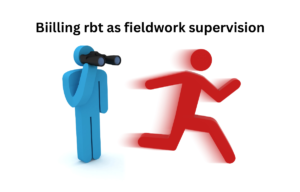Determining your home buying checklist budget is a first step in the home buying process. To get started, you should consider several key factors that will influence how much you can afford. First, assess your gross monthly income and itemize your monthly expenses. Fixed expenses include rent, utilities, and car payments, while variable expenses might be groceries, entertainment, and dining out. By categorizing these expenses, you can identify areas to cut back and allocate more funds towards your home purchase.
A commonly used guideline is the 28% rule, which suggests that your mortgage payment should not exceed 28% of your gross monthly income. This rule helps ensure that your housing costs remain manageable and that you can still cover other necessary expenses. Consider your debt-to-income ratio, which is the percentage of your gross monthly income that goes towards paying debts. A lower ratio indicates a healthier financial situation, making it easier to secure a mortgage.
How to check and improve your credit score before buying a home?
Your credit score plays a significant role in securing a mortgage and determining the interest rates you qualify for. Begin by obtaining a copy of your credit report from major credit bureaus to identify any errors or discrepancies. Correcting these issues can help boost your score. Aim to pay off existing debts and avoid taking on new ones in the months leading up to your home purchase. Regularly monitor your credit to ensure there are no unexpected changes.
Improving your credit score often involves strategic financial behavior over time. Consistently paying bills on time, reducing credit card balances, and maintaining a low credit utilization ratio are key strategies. If your score is lower than desired, consider working with a financial advisor or credit counselor to develop a plan to improve it. Some lenders also offer programs designed to help first-time buyers with less-than-perfect credit secure favorable mortgage terms.
What are the different types of mortgage loans available?
Several types of mortgage loans are available, each with its own benefits and requirements. Conventional loans are popular and require a higher credit score and a larger down payment but offer competitive interest rates. FHA loans are government-backed and designed for first-time buyers or those with lower credit scores, requiring as little as 3.5% down. VA loans are available to veterans and active-duty military personnel, often offering zero down payment options and favorable terms.
USDA loans are another option for buyers in rural areas, providing low-interest rates and zero down payment for those who meet income requirements. Adjustable-rate mortgages (ARMs) offer lower initial interest rates that adjust after a specified period, making them suitable for buyers planning to move or refinance before the rate changes. It is essential to research and compare different loan options to find the one that best fits your financial situation and long-term goals
How to save for a down payment and closing costs?
Saving for a down payment and closing costs requires a strategic approach to ensure you can cover these significant expenses without financial strain. Start by setting a clear savings goal based on your target Home buying checklist price, down payments range from 3% to 20% of the homes purchase price, depending on the type of loan. For instance, FHA loans may require as little as 3.5%, while conventional loans often require around 20% to avoid private mortgage insurance (PMI), plan for closing costs, which can range from 2% to 5% of the loan amount.
To effectively save for these costs, consider setting up a dedicated savings account to keep your Home buying checklist funds separate from your regular expenses. Automating your savings by directing a portion of your paycheck into this account can also help you consistently build your fund without the temptation to spend it. Explore high-yield savings accounts or certificates of deposit (CDs) to maximize the interest earned on your savings.
If you need to accelerate your savings, look for ways to reduce your current expenses and increase your income. This might include cutting back on non-essential spending, finding additional sources of income, or even temporarily moving to a less expensive living situation. An investigate down payment assistance programs available through local, state, or federal agencies, which can provide grants or low-interest loans to help cover these costs.

How to choose a reliable real estate agent?
Choosing a reliable real estate agent is crucial to navigating the home-buying process smoothly and successfully. Start by seeking recommendations from friends, family, or colleagues who have recently bought Home buying checklist. Online reviews and ratings can also provide insights into an agents reputation and track record. Look for agents who have extensive experience in the specific area where you want to buy, as they will have valuable local market knowledge.
When interviewing potential agents, ask about their recent sales history, their familiarity with the types of properties you are interested in, and their approach to helping clients find and secure Home buying checklist. A good agent should be responsive, communicative, and proactive in addressing your needs and concerns. They should also be able to provide a clear explanation of the buying process and assist with negotiating offers and handling paperwork.
Ensure your agent is a good fit for your personality and working style. Trust and comfort with your agent are essential, as you will be relying on their expertise and guidance throughout the home buying checklist journey. Take the time to meet with a few agents before making your decision to ensure you find the right partner for this significant investment.
What are the key factors in deciding where to live?
Deciding where to live involves considering several key factors to ensure the location aligns with your lifestyle, needs, and long-term goals. evaluate the proximity to work, schools, and essential services like healthcare, shopping, and public transportation. A convenient location can significantly impact your daily commute and overall quality of life. explore the neighborhood amenities, parks, recreational facilities, and community centers, to ensure they match your interests and activities.
Safety and security are also paramount when choosing a location. Research crime rates and talk to local residents to get a sense of the neighborhoods safety. Check for nearby police and fire stations, as well as the presence of neighborhood watch programs, consider the neighborhoods future development plans, which can affect property values and the communities character over time.
Consider the neighborhoods overall vibe and demographic composition. Visit the area at different times of the day and week to observe the level of activity, noise, and traffic. Engage with potential neighbors to understand the community culture and whether it aligns with your lifestyle. Factors the presence of young families, retirees, or professionals can influence your decision based on your own life stage and preferences
What should you look for during house hunting?
When house hunting, start by evaluating the location. Consider the proximity to your workplace, schools, shopping centers, parks, and public transportation. The location impacts not only your daily commute but also the overall lifestyle and convenience. Pay attention to the neighborhoods safety, noise levels, and future development plans, which can influence property values and quality of life.
Next, assess the condition and structure of the home buying checklist. Look for any signs of structural issues cracks in walls, uneven floors, or sagging ceilings. Check for water damage, which could indicate plumbing issues or poor drainage. Pay attention to the condition of the roof, windows, and insulation to avoid high repair costs in the future. Consider the homes layout and whether it fits your current and future needs, having enough bedrooms and bathrooms, a suitable kitchen, and ample storage space.
Consider the amenities and features of the home buying checklist. These can include updated kitchens and bathrooms, energy-efficient appliances, outdoor spaces like patios or decks, and other features that align with your lifestyle and preferences. Prioritize your must-haves versus nice-to-haves to help you make a balanced decision. Be flexible, as your preferences might evolve as you view more properties.
How to evaluate the condition of a home before buying?
Evaluating the condition of a home buying checklist involves a thorough inspection to identify any potential issues. Start with a visual inspection during your initial visit. Look for obvious signs of damage: cracks in the foundation, leaks in the roof, or water stains on ceilings and walls. Pay attention to the age and condition of the major systems in the house, including plumbing, electrical, and HVAC systems, as these can be costly to repair or replace.
Hire a professional home inspector to conduct a more detailed examination. A qualified inspector will check the structural integrity of the home, the condition of the roof, insulation, windows, and doors, as well as the functionality of electrical outlets and plumbing fixtures. They will also look for signs of pests, mold, and other hidden issues that could affect the home buying checklist safety and livability. Reviewing the inspection report will help you understand the extent of any necessary repairs and maintenance.
Evaluate the exterior and surrounding property. Check the grading around the home buying checklist to ensure water flows away from the foundation. Inspect the condition of exterior features decks, patios, and driveways. If the property includes landscaping, ensure it is well-maintained and that there are no issues with drainage or irrigation systems. Taking these steps will help you make an informed decision about the homes condition and its suitability for your needs.

What are the important steps in making an offer on a home?
Making an offer on a home buying checklist involves several important steps to ensure your bid is competitive and well-received. Start by working with your real estate agent to determine a fair offer price based on comparable home buying checklist in the area, the homes condition, and market conditions. Your agent will help you draft a purchase agreement that includes the offer price, contingencies, and any seller concessions you might request.
Include contingencies in your offer to protect yourself during the transaction. Common contingencies include financing, home inspection, and appraisal contingencies. These conditions allow you to back out of the deal or renegotiate if certain criteria are not met, And not securing a mortgage or discovering significant issues during the home inspection.
Submit your offer with earnest money to demonstrate your commitment. Earnest money is a deposit that shows you are serious about purchasing the home. If the seller accepts your offer, this money will be applied towards your down payment or closing costs. Be prepared for negotiations; the seller may counter your offer with different terms. Work closely with your agent to respond appropriately and reach an agreement that works for both parties
What should you expect during a home inspection and appraisal?
During a home inspection, the inspector will thoroughly examine the property to identify any potential issues. The inspection covers the foundation, roof, HVAC system, plumbing, electrical systems, and other structural components. The goal is to uncover any defects or areas that need repair, which can influence your decision to purchase the home or negotiate the price. Inspections usually take a few hours, and it is beneficial for buyers to attend so they can ask questions and get a better understanding of any issues found. home inspection
A home appraisal is conducted to determine the market value of the property. The appraiser assesses various factors, including the homes condition, location, and recent sales of similar properties in the area. The appraisal report includes detailed information about the property, its size, layout, and features, as well as an evaluation of the neighborhoods. This process helps lenders ensure that the loan amount does not exceed the homes value. The appraisal can take a few days to a week, and it is a crucial step in securing financing.
How to negotiate repairs and seller concessions?
Negotiating repairs and seller concessions is an essential part of the Home buying checklist process. After the home inspection, you will receive a report detailing any issues found. Prioritize the most critical repairs, structural problems or safety hazards, and request the seller to address these before closing. You can also ask for seller concessions, where the seller agrees to cover some of the closing costs or reduce the sale price to compensate for the repairs you will need to make yourself.
When making your requests, be reasonable and provide evidence from the inspection report to support your claims. It is often helpful to get quotes from contractors to estimate the cost of repairs. If the seller is unwilling to make the necessary repairs or provide concessions, you may need to decide whether to proceed with the purchase, renegotiate the terms, or walk away. Effective negotiation ensures that you are not left with unexpected costs after moving in.
What legal considerations are involved in buying a home?
Legal considerations in buying a home include reviewing the purchase agreement, conducting a title search, and understanding any contingencies. The purchase agreement outlines the terms of the sale, including the price, closing date, and any conditions that must be met. It is essential to review this document carefully and consult with a real estate attorney if necessary to ensure your interests are protected. how to home buy step to step guided
A title search is conducted to verify the sellers legal ownership of the property and to check for any liens or claims against it. Ensuring a clear title is crucial to prevent future legal disputes. Many home purchase agreements include contingencies, obtaining financing, satisfactory home inspection results, and appraisal values. These contingencies provide legal grounds to cancel the contract if certain conditions are not met, protecting the buyer from potential risks.

What are the final steps to closing on your new home?
The final steps to closing on your new home involve several critical actions. Firstly, you will conduct a final walk-through of the property, usually within 24 hours before closing. This is your last chance to ensure that the property is in the agreed-upon condition and that any repairs requested after the home inspection have been completed. It is essential to verify that no new issues have arisen since your last visit.
you will attend the closing meeting, where you will sign various documents, including the mortgage agreement, promissory note, and the deed of trust or mortgage. The deed of trust transfers the properties title to the lender as collateral for the loan. The promissory note is a legal document in which you promise to repay the loan under specified terms. At this meeting, you will also pay the closing costs, which can include loan origination fees, title insurance, and escrow fees.
After signing the documents and making the necessary payments, you will receive the keys to your new home. The title company will record the new deed with the local government, officially transferring ownership to you. It is essential to keep all the closing documents in a safe place, as they contain important information about your mortgage and property ownership.
What to do after closing to settle into your new home?
After closing, there are several steps to take to settle into your new home smoothly. Start by organizing and storing all your closing documents in a secure place. These documents include the mortgage agreement, deed, and insurance policies, which are crucial for future reference. Ensure you have copies of these documents easily accessible for any legal or financial needs that may arise.
Update your address with relevant entities, the postal service, your employer, banks, and subscription services. This ensures you receive all your mail and notifications at your new home, transfer or set up new utility services, including electricity, water, gas, and internet, to ensure everything is operational when you move in.
Consider enhancing your homes security by changing the locks and updating any security systems. Familiarize yourself with the neighborhoods, including nearby amenities, healthcare facilities, and emergency services. Taking these steps will help you feel secure and comfortable in your new home, marking the beginning of a new chapter in your life.
What are the key takeaways from the home buying process?
Navigating the Home buying checklist process involves multiple critical steps, from determining your budget and improving your credit score to understanding and reviewing mortgage documents. Setting a clear budget and evaluating your financial health is essential for determining how much you can afford. Enhancing your credit score can improve your chances of securing favorable mortgage terms, while choosing the right type of mortgage loan is crucial for aligning your financial commitments with your long-term goals.
The Home buying checklist journey continues with house hunting, where evaluating the location, condition, and features of potential homes helps ensure you find a property that meets your needs. Negotiating repairs and understanding legal considerations, the purchase agreement and title search are essential steps that protect your investment. comprehending the mortgage documents, including the Loan Estimate and Closing Disclosure, ensures you are fully aware of the financial implications and terms of your mortgage.
How can you ensure a smooth transition into homeownership?
To ensure a smooth transition into homeownership, start by organizing all your closing documents in a secure location and updating your address with relevant entities. Setting up utility services and enhancing your homes security are practical steps to make your new house feel like home. Familiarize yourself with your neighborhood and take the time to explore local amenities and services, which can significantly enhance your living experience.
Taking care of any immediate repairs or improvements can prevent future issues and help you settle in more comfortably. Building a support network with neighbors and local community groups can also provide valuable resources and a sense of belonging. Being proactive and thorough in your preparations, you can enjoy a seamless transition into your new home and start creating lasting memories.

How Should You Finalize Your Home Buying Checklist?
Finalizing your home buying checklist is crucial to ensure you are fully prepared to make one of the biggest financial decisions of your life. This checklist should encompass all the critical steps from starting your search to making an offer, securing financing, and closing the deal. Highlighting aspects, inspecting properties, the local market, and engaging the right professionals can provide peace of mind and a smoother transaction.
Key Elements To Include:
Key elements to include are budgeting for upfront costs, evaluating long-term financial impacts, and ensuring the property meets your needs both now and in the future. It is also essential to revisit your down payment options to determine the best financial strategy for your situation. This could influence your mortgage terms, monthly payments, and overall budget planning. In conclusion, integrating careful planning with detailed research, guided by your comprehensive home buying checklist, will position you to navigate the complexities of the real estate market effectively. With down payment options carefully considered, you can optimize your investment and enjoy a successful Home buying checklist journey.













